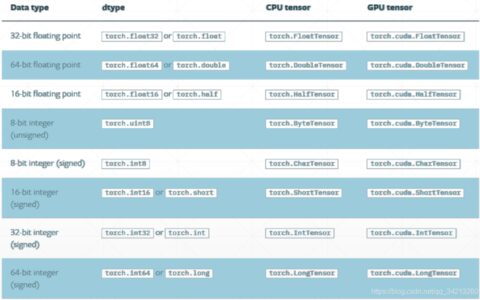PyTorch如何切换CPU和GPU的使用详解
PyTorch是一种常用的深度学习框架,它支持在CPU和GPU上运行。在本文中,我们将介绍如何在PyTorch中切换CPU和GPU的使用,并提供两个示例说明。
示例1:在CPU上运行PyTorch模型
以下是一个在CPU上运行PyTorch模型的示例代码:
import torch
# Define model
class Net(torch.nn.Module):
def __init__(self):
super(Net, self).__init__()
self.fc1 = torch.nn.Linear(10, 5)
self.fc2 = torch.nn.Linear(5, 1)
def forward(self, x):
x = torch.relu(self.fc1(x))
x = self.fc2(x)
return x
# Create input tensor
x = torch.randn(1, 10)
# Create model and run on CPU
model = Net()
output = model(x)
print(output)
在这个示例中,我们首先定义了一个简单的神经网络模型。然后,我们创建了一个输入张量,并将模型和输入张量都放在CPU上运行。最后,我们打印了模型的输出。
示例2:在GPU上运行PyTorch模型
以下是一个在GPU上运行PyTorch模型的示例代码:
import torch
# Define model
class Net(torch.nn.Module):
def __init__(self):
super(Net, self).__init__()
self.fc1 = torch.nn.Linear(10, 5)
self.fc2 = torch.nn.Linear(5, 1)
def forward(self, x):
x = torch.relu(self.fc1(x))
x = self.fc2(x)
return x
# Create input tensor
x = torch.randn(1, 10)
# Create model and run on GPU
device = torch.device('cuda' if torch.cuda.is_available() else 'cpu')
model = Net().to(device)
x = x.to(device)
output = model(x)
print(output)
在这个示例中,我们首先定义了一个简单的神经网络模型。然后,我们创建了一个输入张量,并将模型和输入张量都放在GPU上运行。最后,我们打印了模型的输出。
总结
在本文中,我们介绍了如何在PyTorch中切换CPU和GPU的使用,并提供了两个示例说明。这些技术对于在深度学习中处理大规模数据集非常有用。
本站文章如无特殊说明,均为本站原创,如若转载,请注明出处:Pytorch如何切换 cpu和gpu的使用详解 - Python技术站

 微信扫一扫
微信扫一扫  支付宝扫一扫
支付宝扫一扫 

